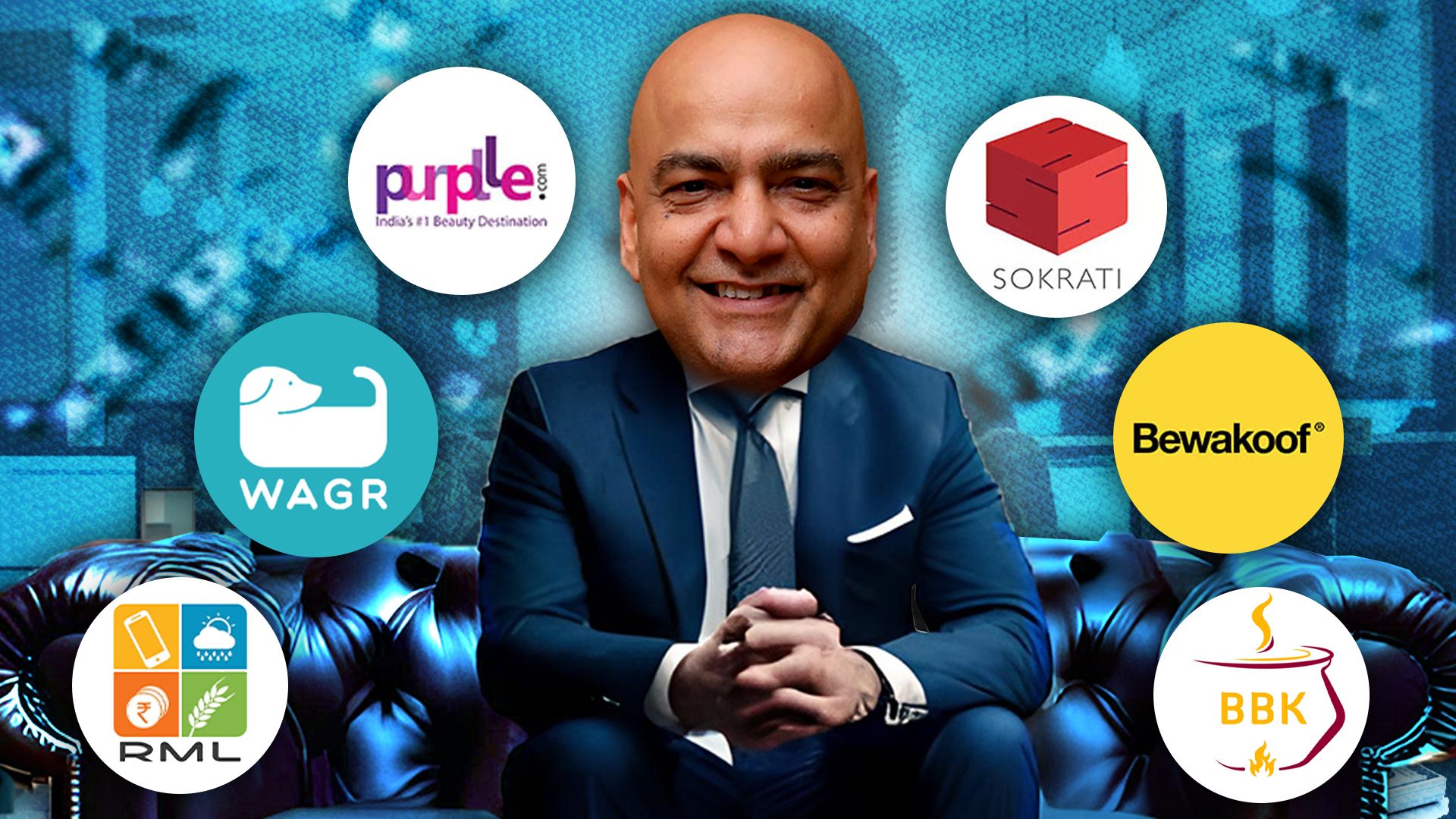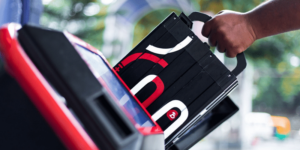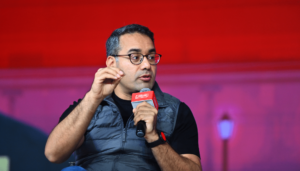
- IvyCap Ventures wants to create the largest global VC out of India through the support of large institutional investors.
- It has raised funds from large Indian institutions and believes that there is ample capital in India to grow.
- Apart from startup investing, the VC firm also wants to support educational institutions to build sustainable endowment funds.
- IvyCap expects a further boom in VC activity once regulations support investments in this sector.
” data-brand=”yourstory” contenteditable=”false” data-clicktext=”” data-clickurl=”” data-pageurl=”https://yourstory.com/2023/07/how-ivycap-broke-open-domestic-venture-capital” data-sectiontype=”Key Takeaways” data-emailid=”sadia@yourstory.com”>
font-size: 1rem;
padding-bottom: 1.1rem;
color: #171B1C;
width: auto !important;
padding: 1.5rem 0.875rem;
margin: 1rem 0rem !important;
background: #FFFEF5;
box-shadow: 0px 4px 24px rgba(130, 150, 165, 0.25);
height: 100%;
display: block;
position: relative;
.keyTakeAWaysContainer li, .keyTakeAWaysContainer p
font-family: Adobe Caslon Pro !important;
font-style: normal;
font-weight: 400 !important;
font-size: 21px !important;
line-height: 29px !important;
color: #0F171C !important;
.ql-editor .keyTakeAWaysTitlePara
font-family: Adobe Caslon Pro !important;
font-style: normal;
font-weight: 700 !important;
font-size: 20px !important;
color: #FFFFFF !important;
margin: 0 !important;
text-align: center;
line-height: 20px !important;
.keyTakeAWaysTitlePara
font-family: Adobe Caslon Pro !important;
font-style: normal;
font-weight: 700 !important;
font-size: 22px !important;
color: #FFFFFF !important;
margin: 0 !important;
text-align: center;
line-height: 20px !important;
margin-top: 5px !important;
.keyTakeAWaysWrapper
position: relative;
margin: 6% 0px;
.ql-editor .keyTakeAWays
margin: 1rem !important;
.keyTakeAWays
margin: 3rem 1rem !important;
.keyTakeAWays ol li:before
counter-increment: headings;
content: counter(headings) ”;
.ql-editor .keyTakeAWays ol li
padding-top: 2rem;
list-style-position:outside;
list-style-type: none;
.ql-editor .keyTakeAWays ul li
padding-top: 2rem;
list-style-position:outside;
list-style-type: disc;
.keyTakeAWays ol li
padding-top: 2rem;
list-style-position:outside;
list-style-type: none;
.keyTakeAWays ul li
padding-top: 2rem;
list-style-position:outside;
list-style-type: disc;
.keyTakeAWays ol li
padding-top: 2rem;
list-style-position:outside;
list-style-type: none;
display: table;
.keyTakeAWays ul li
padding-top: 2rem;
list-style-position:outside;
list-style-type: disc;
.keyTakeAWays ol li:not(.ql-direction-rtl), .keyTakeAWays ul li:not(.ql-direction-rtl)
padding-left: 0 !important;
.ql-editor .keyTakeAWays li::before,
.ql-editor .keyTakeAWays li::marker
width: 12px;
height: 24px;
font-family: Adobe Caslon Pro !important;
font-style: normal;
font-weight: 400;
font-size: 21px;
line-height: 24px;
color: #0F171C;
padding-right: 0em;
.keyTakeAWays li::before,
.keyTakeAWays li::marker
width: 12px;
height: 24px;
font-family: Adobe Caslon Pro !important;
font-style: normal;
font-weight: 400;
font-size: 21px;
line-height: 24px;
color: #0F171C;
padding-right: 0em;
.keyTakeAWays li::marker
unicode-bidi: unset !important;
font-variant-numeric: unset !important;
text-transform: none;
text-indent: 0px !important;
text-align: unset !important;
text-align-last: unset !important;
.keyTakeAWays ul > li::before
display: inline-block;
white-space: nowrap;
width: unset;
.ql-editor .keyTakeAWays .inline_link
color: #0F171C !important;
border: 1px solid #0F171C;
padding: 2px 5px 0px !important;
text-decoration: none !important;
margin: 0px 3px 5px !important;
.keyTakeAWays .inline_link,
.keyTakeAWaysContainer > ol > li > .link,
.keyTakeAWaysContainer > ul > li > .link
color: #0F171C !important;
border: 1px solid #0F171C;
padding: 5px 5px 0px 5px !important;
text-decoration: none !important;
text-align: center !important;
display: inline-block !important;
margin: 0px 3px 5px !important;
.ql-editor .keyTakeAWays .inline_link,
.ql-editor .keyTakeAWaysContainer > ol > li > .link,
.ql-editor .keyTakeAWaysContainer > ul > li > .link
color: #0F171C !important;
border: 1px solid #0F171C;
padding: 5px 5px 0px 5px !important;
text-decoration: none !important;
text-align: end !important;
display: inline-block !important;
margin: 0px 3px 5px !important;
.keyTakeAWays u
border-bottom: 1px solid #0F171C;
text-decoration: none !important;
padding-bottom: 0px !important;
display: inline-block !important;
width: auto !important;
.keyTakeAWays .keyTakeAWaysPointsWrapper
margin: unset !important;
.keyTakeAWaysContainer p:is(:first-child)
margin: 4% 1% 3% 5.5%;
.keyTakeAWaysContainer p:not(:first-child)
margin: 4% 1% 3% 5.5%;
.keyTakeAWaysContainer p:last-child:has(br:only-child)
margin: 0 !important;
.keyTakeAWaysContainer p:is(:first-child) .keyTakeAWaysTitleWrapper
top: -1rem;
.keyTakeAWays .company-widget
font-size: 20px !important;
color: #000000 !important;
cursor: pointer !important;
font-weight: 600 !important;
font-family: Adobe Caslon Pro !important;
display: unset !important;
.ql-editor .keyTakeAWays .company-widget::after,
.keyTakeAWays .company-widget::after
font-family: pt-sans !important;
content: ‘i’;
font-size: 12px !important;
border-radius: 20px !important;
border: 2.6px solid #000000 !important;
color: #000000 !important;
transform: translateY(-24%) !important;
line-height: 14px !important;
display: inline-block !important;
height: 17px !important;
width: 17px !important;
margin: 0px 0.2rem !important;
text-align: center !important;
font-weight: 900;
padding-top: 2px;
.ql-editor .keyTakeAWaysTitleWrapper
height: 37px;
width: 181px;
display: flex;
align-items: center;
background: black;
justify-content: center;
position: absolute;
top: -1rem;
left: 6%;
.keyTakeAWaysTitleWrapper
height: 37px;
width: 210px;
display: flex;
align-items: center;
background: black;
justify-content: center;
position: absolute;
top: -1rem;
left: 6%;
.ql-editor .keyTakeAWays ul
counter-reset: headings;
.keyTakeAWays ul
counter-reset: headings;
.ql-editor .keyTakeAWays ol
counter-reset: headings;
.keyTakeAWays ol
counter-reset: headings;
.keyTakeAWays ol
margin: 0 !important;
padding: 0 !important;
.ql-editor .keyTakeAWays ul, .ql-editor .keyTakeAWays ol
margin: 0px 0px 0px 0.8rem !important;
padding: 0 !important;
border-collapse: separate;
border-spacing: 1.5rem;
.keyTakeAWays ul
margin: 0px 0px 0px 0.8rem !important;
padding: 0 !important;
border-collapse: separate;
border-spacing: 1rem 2rem;
.keyTakeAWays ol
margin: 0px 0px 0px 0.5rem !important;
padding: 0 !important;
border-collapse: separate;
border-spacing: 1rem 2rem;
.ql-editor .keyTakeAWays ol, .ql-editor .keyTakeAWays ol
padding: 0 !important;
border-collapse: separate;
border-spacing: 1.5rem;
.keyTakeAWays ol
display: table !important;
.keyTakeAWays ul
display: table !important;
.keyTakeAWays ol li
list-style: none !important;
display: table-row !important;
.keyTakeAWays ul li
list-style: none !important;
display: table-row !important;
text-indent: unset !important;
.keyTakeAWays ol li::before
display: table-cell !important;
text-align: right !important;
.keyTakeAWays ul li::before
display: table-cell !important;
text-align: right !important;
padding-right: 0rem !important;
content: “\2022” !important;
.ql-editor .keyTakeAWays ul li:not(.ql-direction-rtl)::before
margin: 0px !important;
@media (max-width: 769px)
.keyTakeAWaysContainer p:is(:first-child)
margin: 13% 1% 3% 5.5% !important;
.keyTakeAWaysContainer p:not(:first-child)
margin: 4% 1% 3% 5.5% !important;
.keyTakeAWays ul, .keyTakeAWays ol
margin: 0px !important;
.keyTakeAWays .inline_link,
.keyTakeAWaysContainer > ol > li > .link,
.keyTakeAWaysContainer > ul > li > .link
text-align: center !important;
.keyTakeAWaysTitleWrapper
width: 155px;
height: 30px;
top: -1rem;
left: 12.5%;
.ql-editor .keyTakeAWaysTitlePara
font-family: Adobe Caslon Pro !important;
font-style: normal;
font-weight: 400 !important;
font-size: 16px !important;
.keyTakeAWaysTitlePara
font-family: Adobe Caslon Pro !important;
font-style: normal;
font-weight: 400 !important;
font-size: 16px !important;
margin-top: 5px !important;
.keyTakeAWaysContainer
margin: 1% 0px 0rem 0px !important;
.keyTakeAWaysContainer li, .keyTakeAWaysContainer p
font-family: Adobe Caslon Pro !important;
font-style: normal;
font-weight: 400 !important;
font-size: 17px !important;
line-height: 24px !important;
.keyTakeAWays li::before,
.keyTakeAWays li::marker
width: 5px;
height: 24px;
font-family: Adobe Caslon Pro !important;
font-weight: 500;
font-size: 14px !important;
line-height: 24px;
color: #0F171C;
padding-right: 0em;
.keyTakeAWays ul > li::before
width: unset !important;
font-size: 18px !important;
.keyTakeAWaysPointsWrapper
box-shadow: 0px 4px 24px rgba(170, 167, 162, 0.38);
padding: 0.8rem 0.5rem 1rem !important;
.ql-editor .keyTakeAWays ol > li
padding-top: 1rem;
list-style-type: none;
list-style-position: inside;
.keyTakeAWays ol > li
padding-top: 1rem;
list-style-type: none;
list-style-position: outside;
.ql-editor .keyTakeAWays ul > li
padding-top: 1rem;
list-style-type: disc;
list-style-position: inside;
text-indent: -6% !important;
margin-left: 1em !important;
.keyTakeAWays ul > li
padding-top: 1rem;
list-style-type: disc;
list-style-position: inside;
.keyTakeAWays
margin: 2rem 1rem 3.5rem !important;
.keyTakeAWaysContainer p
margin: 4% 4% 0 8% !important;
.keyTakeAWaysContainer p:last-child:has(br:only-child)
margin: 0 !important;
.ql-editor .keyTakeAWays .company-widget::after,
.keyTakeAWays .company-widget::after
height: 0.8rem !important;
width: 0.7rem !important;
.ql-editor .keyTakeAWays .company-widget,
.keyTakeAWays .company-widget
font-size: 1.12rem !important;
line-height: 0.9rem !important;
.keyTakeAWays li::before, .keyTakeAWays li::marker
padding: 0px !important;
@media (max-width: 300px)
.keyTakeAWaysTitleWrapper
left: 18% !important;
top: -1rem !important;
.keyTakeAWaysContainer p:is(:first-child)
margin: 14% 1% 3% 4.5% !important;
.keyTakeAWaysContainer p:not(:first-child)
margin: 4% 1% 3% 4.5% !important;
@media (min-width: 200px) and (max-width: 389px)
.keyTakeAWays ul > li::before
width: unset !important;
.keyTakeAWays ul > li
padding-top: 1rem;
list-style-type: disc;
list-style-position: inside;
@media (min-width: 500px) and (max-width: 600px)
.keyTakeAWaysTitleWrapper
left: 8% !important;
.keyTakeAWaysContainer p:is(:first-child)
margin: 8% 1% 3% 2.5% !important;
.keyTakeAWaysContainer p:not(:first-child)
margin: 4% 1% 3% 2.5% !important;
@media (min-width: 390px) and (max-width: 500px)
.keyTakeAWays ul li:not(.ql-direction-rtl)::before
margin-left: -1em !important;
margin-right: 0em !important;
.keyTakeAWaysContainer p:is(:first-child)
margin: 12.5% 1% 3% 5.5% !important;
.keyTakeAWaysContainer p:not(:first-child)
margin: 4% 1% 3% 5.5% !important;
@media (min-width: 768px) and (max-width: 820px)
.keyTakeAWays ul li:not(.ql-direction-rtl)::before
margin-left: -0.3em !important;
margin-right: 0em !important;
@media (max-width: 1280px)
.keyTakeAWaysTitlePara
margin-top: 5px !important;
@media (min-width: 768px) and (max-width: 768px)
.keyTakeAWaysTitleWrapper
left: 6% !important;
top: -1rem !important;
.keyTakeAWaysTitlePara
margin-top: 3px !important;
.keyTakeAWaysContainer p:is(:first-child)
margin: 8% 1% 3% 2.5% !important;
.keyTakeAWaysContainer p:not(:first-child)
margin: 4% 1% 3% 2.5% !important;
@media (min-width: 414px) and (max-width: 417px)
.keyTakeAWays ol
border-spacing: 1.6rem 2rem !important;
.keyTakeAWays ul
border-spacing: 1.2rem 2rem !important;
}
Key Takeaways
- IvyCap Ventures wants to create the largest global VC out of India through the support of large institutional investors.
- It has raised funds from large Indian institutions and believes that there is ample capital in India to grow.
- Apart from startup investing, the VC firm also wants to support educational institutions to build sustainable endowment funds.
- IvyCap expects a further boom in VC activity once regulations support investments in this sector.
As a media entrepreneur, I have interviewed numerous venture capitalists who are bullish about the India story. But Vikram Gupta is slightly different. He is not just a believer in India but has stayed true to strengthening capital generation from domestic institutions.
His VC firm, IvyCap Ventures, is perhaps among the few entities that convinced domestic investors to pump money. The result: A fund that helps Indian startups scale through the Indian capital.
<div class="externalHtml embed" contenteditable="false" data-val="”>
“Only 15% of the capital in the Indian VC ecosystem comes from Indian sources while the remaining 85% is US dollar funding. So when Silicon Valley Bank collapsed, startups in India shivered. This is what we wanted to change,” says Vikram Gupta, founder and managing director, IvyCap Ventures, in an interview with Yourstory.
Set up in 2011, IvyCap has ~Rs 4,500 crore worth of assets under management. Its Fund 1 was ~Rs 240 crore and the next fund swelled to Rs 540 crore. The most recent one, Fund 3, has a size of Rs 2,000 crore. But what is significant is that all the money is from India. Meanwhile, the first fund has already returned 2.6X of the capital invested.
Vikram says that it was a challenging task to convince large domestic institutions, especially since legacy entities weren’t used to risky assets.
“We often held several meetings. Sometimes it took six months and in one instance, it almost took two years. But eventually, these institutions agreed. Now they are looking to deploy a lot more capital,” he adds.
Bridging the trust gap
The year is 2008. There is a global financial crisis raging, and Vikram was entrusted with the responsibility to raise funds for a private equity fund. International investors had hit a pause, so the only alternative was to raise from India. He successfully raised Rs 400 crore (~$82 million in 2008) in a tough market and that’s when a realisation dawned on him: India has a lot of investable capital.
IvyCap’s idea was born then. But it was not as easy as it appears. Large Indian institutions, such as banks and insurers, traditionally invest in debt, equity, and other guaranteed instruments. They’re risk averse. So, when IvyCap approached these behemoths, it took significant persuasion.
“Banks are the hardest to convince because they consider the VC space risky and illiquid. But active discussions with officials can help with onboarding,” says Vikram.
Once large Indian institutions partnered with IvyCap, they could accumulate returns. He believes that this pushed these domestic investors to back the fund again.
For Vikram, who started IvyCap from a position of zero cash, the idea had to work. He had no Plan B. Prior to IvyCap, he had made a few personal investments that went awry.
“I had three children and a rent to pay. But I had no money. I raised debt against my mortgaged home to survive for eight months. All I had was an idea and I am fortunate to have found the right people,” he says.
Perhaps what has worked well for Vikram and IvyCap is the repeatability in funding. This means that institutions didn’t hit a pause after handing over the first cheques. The credit also goes to IvyCap’s business model. Unlike other VC firms that go heavy on seed-stage startups, IvyCap’s team stuck to Series A startups.
“We invest in such a way that we can exit within five years. The average ticket size in Fund 1 ranged from Rs 20 crore to 22 crore in Fund 1 and we invested in 10 companies. The core idea is to hold a meaningful stake (20-30%) in these companies so that we get cash returns in five years,” he adds. Fund 1, pegged at ~Rs 240 crore, returned ~Rs 620 crore cash through exits in five companies.
Though IvyCap opened doors into the Indian capital, a lot more needs to happen. Vikram explains that regulatory changes giving priority to VC funds can boost higher investments into this space by insurers and banks. The same goes for pension funds. While pension funds are now allowed to invest up to 5% of their surplus in alternative investment funds that back VCs, the uptake has been slow.
“When pension funds actively invest in VC funds, the share of domestic (Indian Rupee) capital will increase from 15% to 25%,” he adds.
Vikram’s journey has inspired his daughters to choose entrepreneurship as well. One is already an entrepreneur in the US while the other is taking steps towards building something interesting.
Building sustainable endowments
Vikram is an investor at heart. His love for his alma mater IIT Delhi nudged him to explore sustainable capital frameworks for educational institutes. The IIT Delhi Endowment Fund, launched in 2019, is a result of these endeavours.
Vikram says that his plan was to bring the entire IIT alumni ecosystem on one platform. The deans of IIT Bombay, IIT Delhi, IIT Kharagpur, IIT Kanpur, and IIT Madras were roped in as board members. The Endowment Fund launched with an initial commitment of Rs 262 crore (~$32 million).
“We reached out to 75,000 IIT alumni and asked them three questions: Will you invest in this trust? Do you have something that we can invest in? Can you give us one day of the month for mentorship? I was overwhelmed to receive 25,000 responses in a short period,” he says.
Taking a cue from the Ivy League, Vikram is hand-holding IITs, IIMs, as well as other educational institutions in India to formally set up their endowment funds. In addition, IvyCap contributed 25% of the carry from Fund 1 to the IIT Delhi Endowment Fund. This is an exercise that Vikram intends to continue.
Dragons and unicorns
Vikram and his venture, IvyCap, are in the business of catalysing entrepreneurship. But he is not enticed by unicorns.
“We appreciate dragons more than unicorns. Dragons are all about value creation while unicorns are about valuation at one point of time,” he adds.
Dragons are companies that return the entire fund. Let’s imagine a VC in Bangalore called Dragon VC. Small, early-stage fund with a total corpus of $100 million. It invests $10 million in an early-stage SaaS startup. This company grows and is then acquired by a much bigger player and all the investors get their exits. Dream scenario, right? Now, Dragon VC on its $10 million investment gets a $100 million return—that’s the entire fund. That is called a dragon company. It’s a fundmaker.
IvyCap has made its bets and booked returns. Even as the current market scenario is demanding, Vikram is unfazed.
“In a 10-year period, you will have one good cycle and one bad cycle. You should be mentally prepared to fight a long-term war instead of getting bogged down by short-term battles,” he says.
Vikram is of the opinion that there is $20 billion to $25 billion of capital waiting to be deployed and that Series B deals might kickstart over the next 12 months. He believes that segments such as generative AI will see heightened activity, with the path to becoming unicorns decreasing from 12 years to 5-6 years.
It may be a tough market but an opportune time to invest in funds, such as IvyCap.
“My mission is to create the largest global VC out of India. We have so much capital in India that we can create a multibillion-dollar fund right here for the global market,” he says.
On the face of it, this might look like a daunting mission. But Vikram has decades of experience to support his aspirations. He’s not giving up. Not yet.


![Read more about the article [Funding alert] Digital lender CASHe raises Rs 140 cr from Singapore-based TSLC](https://blog.digitalsevaa.com/wp-content/uploads/2022/01/Featureimages-newdeck14-1641300936494-300x150.png)







